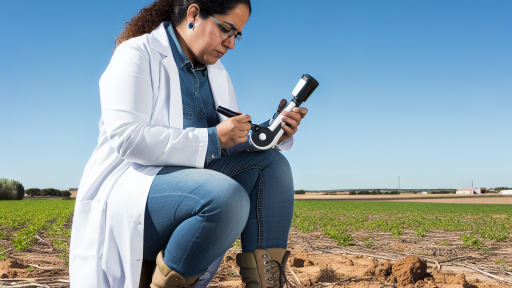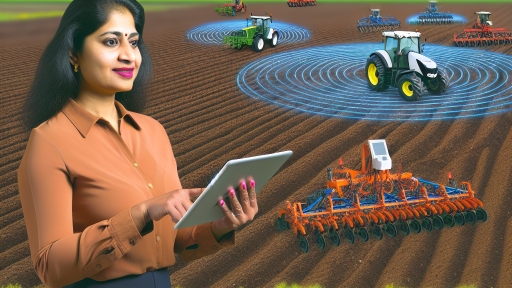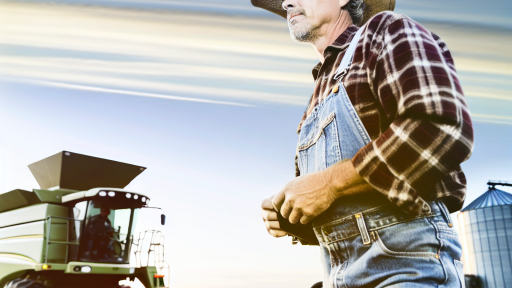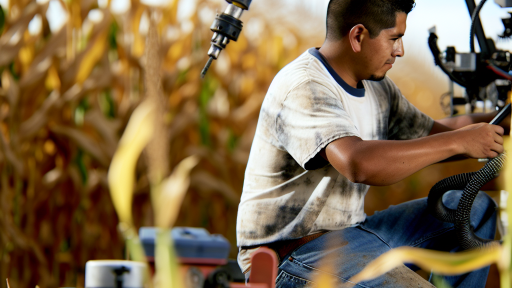Introduction to Vertical Farming and Its Importance
Vertical farming is transforming the agriculture sector.
This innovative practice maximizes space by growing crops in stacked layers.
It utilizes controlled-environment agriculture technology.
This approach allows for year-round production of fresh food.
Additionally, vertical farming greatly reduces the need for arable land.
Urban areas can benefit significantly from this method.
By integrating vertical farms, cities can provide local food sources.
This reduces food transportation costs and carbon emissions.
Moreover, vertical farming addresses food security challenges.
It enables farmers to produce more food with fewer resources.
Furthermore, this method helps combat climate change impacts.
Advanced technologies continue to enhance vertical farming practices.
These technologies include hydroponics, aquaponics, and aeroponics.
Each technique utilizes water efficiently, minimizing waste.
Moreover, LED lighting systems optimize plant growth.
Transform Your Agribusiness
Unlock your farm's potential with expert advice tailored to your needs. Get actionable steps that drive real results.
Get StartedThese systems ensure that crops receive the ideal light spectrum.
By adopting these technologies, farmers improve yield and quality.
This is crucial as the global population continues to rise.
Vertical farming represents a sustainable solution.
Its potential to revolutionize food production is immense.
Overview of Advanced Technologies in Agriculture
Integration of AI and Machine Learning
Artificial intelligence drives innovation in agriculture significantly.
Farmers employ AI to analyze data efficiently.
Machine learning algorithms predict crop yields based on various factors.
This technology supports better decision-making processes.
Additionally, AI enhances precision agriculture techniques.
Use of IoT for Smart Farming
The Internet of Things revolutionizes farming practices.
Sensors collect real-time data about soil conditions and crop health.
This data allows farmers to make timely adjustments.
IoT devices improve resource management, such as water use.
Moreover, they enable remote monitoring of farms worldwide.
Impact of Hydroponics and Aeroponics
Hydroponics and aeroponics are sustainable farming methods.
These systems use less water compared to traditional farming.
They also increase crop yields in limited spaces.
This innovation allows farming in urban environments.
As a result, food production becomes more efficient.
Advancements in Vertical Farming
Vertical farming utilizes advanced lighting technologies.
LED lights provide the spectrum needed for optimal plant growth.
This approach reduces energy consumption significantly.
Moreover, automation streamlines planting and harvesting processes.
Showcase Your Farming Business
Publish your professional farming services profile on our blog for a one-time fee of $200 and reach a dedicated audience of farmers and agribusiness owners.
Publish Your ProfileVertical farms optimize space while maximizing output.
Role of Robotics in Agriculture
Robots play a crucial role in modern agriculture.
They assist with tasks such as planting and harvesting.
Automation minimizes labor costs and increases efficiency.
Additionally, robotics improve the accuracy of agricultural practices.
Farmers can focus on strategic tasks rather than manual labor.
Enhancements in Biotechnology
Biotechnology contributes to improved crop resilience.
Genetically modified organisms (GMOs) offer disease resistance.
This technology increases agricultural productivity sustainably.
Furthermore, biotechnology enables the development of enhanced nutrients.
Farmers can produce healthier food options for consumers.
Hydroponics and Aeroponics: The Foundation of Vertical Farming
Introduction to Hydroponics
Hydroponics is a method of growing plants without soil.
This technique uses a nutrient-rich water solution instead.
It allows for greater control over plant growth conditions.
Farmers can easily manipulate nutrients and pH levels.
Consequently, crops can mature faster than in traditional farming.
Benefits of Hydroponics
Hydroponics offers several advantages for modern agriculture.
- Water consumption is significantly lower compared to conventional farming.
- Crops grow in a sterile environment, reducing disease risk.
- Harvests can occur year-round, maximizing yield.
- It allows urban farming, bringing food production closer to consumers.
Introduction to Aeroponics
Aeroponics takes hydroponics a step further.
This method suspends plants in the air and mists their roots with nutrients.
It maximizes oxygen absorption for healthier plants.
Aeroponics systems can be more efficient and productive.
Furthermore, they occupy less physical space.
Benefits of Aeroponics
Aeroponics provides distinct advantages over traditional methods.
- It uses up to 90% less water than conventional farming.
- Plants grown aeroponically have faster growth rates.
- The risk of root disease is significantly minimized.
- It enables optimal growth by precisely controlling nutrient delivery.
Comparing Hydroponics and Aeroponics
Both hydroponics and aeroponics significantly enhance vertical farming.
However, there are key differences between the two methods.
- Hydroponics relies on a water medium, while aeroponics utilizes air.
- In hydroponics, plants may have a growing medium for support.
- Aeroponics systems require more precise monitoring of conditions.
- Cost and complexity vary, influencing the choice of system.
Both techniques, however, promote sustainable agriculture practices.
They significantly reduce space and resource utilization.
Ultimately, they provide viable solutions for future food production.
Learn More: Automated Machinery for Farm Logistics and Supply
The Role of IoT in Monitoring and Managing Vertical Farms
Introduction to IoT in Agriculture
The Internet of Things (IoT) revolutionizes agriculture.
It connects various devices to enhance productivity.
Farmers gain real-time data for informed decision-making.
Consequently, they can improve crop management and yields.
Remote Monitoring of Environmental Conditions
IoT devices enable remote monitoring of vertical farms.
Sensors track temperature, humidity, and light levels.
This monitoring helps optimize growing conditions.
Farmers receive alerts when conditions deviate from the norm.
As a result, they can take prompt action to mitigate risks.
Automation of Water and Nutrient Delivery
Automation significantly improves resource efficiency.
IoT devices control irrigation and nutrient delivery systems.
Showcase Your Farming Business
Publish your professional farming services profile on our blog for a one-time fee of $200 and reach a dedicated audience of farmers and agribusiness owners.
Publish Your ProfileThis ensures plants receive optimal water and nutrients.
By minimizing human intervention, IoT reduces waste.
Additionally, this system increases overall farm productivity.
Data Analysis for Enhanced Decision-Making
Data analytics play a crucial role in vertical farming.
IoT devices collect vast amounts of data over time.
Farmers analyze this data to identify trends and patterns.
These insights lead to better crop planning and management.
Moreover, data-driven decisions enhance yield quality and quantity.
Integration with Other Technologies
IoT collaborates seamlessly with other advanced technologies.
For instance, it integrates with artificial intelligence (AI).
This combination enhances predictive analytics capabilities.
Furthermore, automated drones can monitor crop health efficiently.
Such integration helps create a more resilient agricultural system.
Challenges and Considerations
Despite its advantages, IoT implementation has challenges.
Data security and privacy concerns remain significant issues.
Farmers must ensure their data is protected from breaches.
Additionally, the cost of IoT devices can be a barrier.
Farmers should weigh the potential return on investment.
The Future of IoT in Vertical Farming
The future looks promising for IoT in agriculture.
As technology advances, costs will likely decrease.
More farmers will adopt IoT for their vertical farms.
Consequently, vertical farming efficiency will increase worldwide.
Thus, IoT will play a pivotal role in sustainable agriculture.
See Related Content: Automated Machinery for Efficient Irrigation Systems
Artificial Intelligence for Optimizing Crop Growth and Yield
Introduction to AI in Agriculture
Artificial intelligence is revolutionizing agricultural practices.
Specifically, it enhances vertical farming methods.
Farmers utilize AI tools to analyze vast amounts of data efficiently.
Data-Driven Decision Making
Data analysis allows farmers to optimize growth conditions.
For instance, AI can assess factors like light, temperature, and humidity.
This leads to informed decisions regarding crop management.
Consequently, yield increases while resource usage decreases.
Predictive Analytics in Crop Management
AI employs predictive analytics to forecast crop performance.
These forecasts rely on historical data and current environmental conditions.
Farmers can adjust their strategies ahead of potential issues.
This proactive approach minimizes risks associated with weather and pests.
Smart Irrigation Systems
AI-driven irrigation systems improve water efficiency significantly.
They use real-time data to determine optimal watering schedules.
As a result, crops receive the necessary hydration without waste.
This innovation conserves water resources effectively.
Automated Monitoring Systems
Automated monitoring systems track crop health continuously.
Showcase Your Farming Business
Publish your professional farming services profile on our blog for a one-time fee of $200 and reach a dedicated audience of farmers and agribusiness owners.
Publish Your ProfileEquipped with sensors, these systems measure growth metrics.
AI analyzes the data to identify signs of stress or disease.
This enables quick intervention, improving crop resilience.
Integrating Robotics in Farming
Robotics, combined with AI, enhances farming efficiency.
Robots can handle labor-intensive tasks like planting and harvesting.
This not only saves time but also reduces labor costs.
Farmers can then focus on strategic planning and management.
Enhancing Sustainability
AI promotes sustainable farming practices across different levels.
By optimizing resource usage, it minimizes the environmental footprint.
Additionally, it supports biodiversity through precise crop management.
This shift towards sustainability is critical in modern agriculture.
Explore Further: Automated Machinery for Pest Control Strategies
Energy Efficiency Technologies in Vertical Farming
LED Lighting: A Game Changer
LED lighting revolutionizes vertical farming practices.
These lights consume significantly less energy compared to traditional lighting options.
Moreover, they emit specific wavelengths that enhance plant growth.
This targeted approach optimizes the photosynthesis process.
Farmers can also control light intensity to suit different crops.
As a result, crop yields often increase in LED-lit environments.
Additionally, LED systems have a longer lifespan than other types of lighting.
This longevity translates into cost savings over time.
Hydroponic Systems: Conserving Water and Energy
Hydroponic systems offer an efficient alternative to traditional soil farming.
These systems use significantly less water, which is crucial in urban settings.
Moreover, hydroponics facilitates year-round crop production.
Farmers can better manage nutrients, reducing waste and improving plant health.
The controlled environment also minimizes pest issues, leading to fewer pesticide applications.
Automation and Smart Farming Technologies
Automation is transforming energy efficiency in vertical farms.
Smart sensors monitor environmental conditions continuously.
This data allows for precise adjustments in temperature, humidity, and light.
Consequently, farmers can maintain optimal growing conditions.
Furthermore, automated systems reduce labor costs significantly.
Farmers can focus on more strategic tasks instead of routine maintenance.
Renewable Energy Sources
Integrating renewable energy sources enhances the sustainability of vertical farms.
Solar panels are increasingly popular for powering these operations.
This independence from external energy sources reduces operational costs.
Additionally, wind turbines are becoming viable options in some areas.
Using renewable energy contributes to lower carbon footprints.
It promotes a more sustainable food production model overall.
Implications of Energy Efficiency Technologies
Implementing these advanced technologies boosts energy efficiency in vertical farming.
They not only enhance productivity but also promote sustainability.
As urban populations grow, these methods will become essential for future food security.
Showcase Your Farming Business
Publish your professional farming services profile on our blog for a one-time fee of $200 and reach a dedicated audience of farmers and agribusiness owners.
Publish Your ProfileSee Related Content: Integrating Robotics Into Traditional Farming
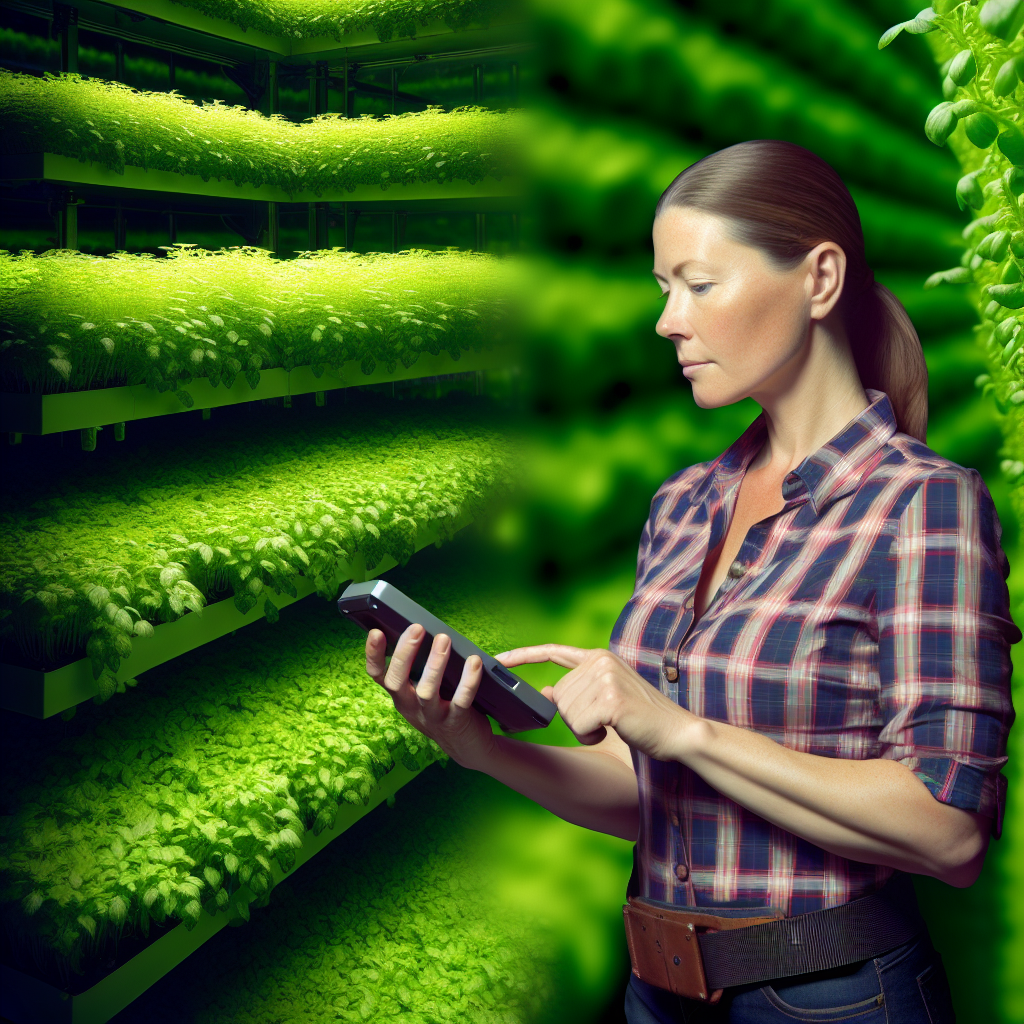
Automation and Robotics in Plant Maintenance and Harvesting
Integrating Robotics into Vertical Farms
Robotics is transforming the landscape of vertical farming.
These technologies enhance efficiency and productivity.
Advanced robots can perform tasks like planting and watering.
Moreover, they can operate in various environmental conditions.
As a result, farms can maintain optimal growing conditions consistently.
Benefits of Automated Maintenance Systems
Automated systems provide numerous advantages for plant maintenance.
They reduce the need for manual labor significantly.
This decrease in labor not only cuts costs but also minimizes human error.
Additionally, automation allows for precise control over growth factors.
This control boosts crop yields and improves quality.
Harvesting with Precision
Robotic harvesting offers a significant leap in efficiency.
These machines can work faster than human laborers.
They are designed to minimize damage during the harvesting process.
Furthermore, robots can operate during off-peak hours.
This flexibility ensures a continuous supply of fresh produce.
The Role of AI in Farming Robotics
Artificial intelligence enhances the capabilities of farming robots.
AI algorithms allow for better decision-making based on data.
These algorithms analyze environmental conditions to optimize performance.
As a result, robots can adapt to changes quickly.
This adaptability leads to improved crop management practices.
Case Studies of Successful Implementation
Several farms are successfully integrating automation and robotics.
GreenGrow Farms recently adopted robotic systems for planting.
This transition led to a 30% increase in operational efficiency.
AgriTech Solutions reported similar results with their harvesting drones.
These success stories demonstrate the potential of automated technologies.
Sustainable Practices Supported by Advanced Technologies in Vertical Farming
Integration of Smart Technologies
Advanced technologies enhance vertical farming by integrating smart systems.
These systems include IoT devices to monitor environmental conditions.
Farmers use sensors to track humidity, temperature, and light levels.
This data optimizes growth conditions for various crops.
Additionally, data analytics improves decision-making processes.
Efficient Resource Management
Vertical farming leverages technologies for efficient resource management.
Hydroponic systems use significantly less water than traditional farming.
Farmers recirculate water, minimizing waste and maximizing efficiency.
LED lighting systems reduce energy consumption while promoting growth.
They provide specific spectrums of light tailored to each plant’s needs.
Automation and Robotics
Automation is revolutionizing the vertical farming landscape.
Robotic systems handle planting, monitoring, and harvesting tasks.
This reduces labor costs and increases operational efficiency.
Automated platforms also ensure consistent crop quality and yield.
Showcase Your Farming Business
Publish your professional farming services profile on our blog for a one-time fee of $200 and reach a dedicated audience of farmers and agribusiness owners.
Publish Your ProfileData-Driven Insights
Data collection offers valuable insights for vertical farming operations.
Farmers analyze historical data to forecast crop performance.
This analysis assists in optimizing planting schedules and crop rotation.
Moreover, machine learning models predict pest and disease outbreaks.
Farmers can proactively manage crops to reduce losses.
Environmental Sustainability
Vertical farming practices contribute to environmental sustainability.
They reduce the carbon footprint associated with traditional agriculture.
The localized nature of vertical farms minimizes transportation emissions.
Additionally, vertical farms can be established in urban areas, reducing land use.
These practices enhance food security and urban resilience.
Future Trends: Innovations on the Horizon for Vertical Farming
Integration of AI and Automation
Artificial intelligence transforms vertical farming through data analysis.
Farmers utilize AI to predict crop yields and optimize resources.
Automation streamlines operations, reducing labor costs significantly.
Moreover, automated systems monitor plant health continuously.
Advancements in Hydroponics and Aeroponics
Hydroponics continues to evolve, enhancing nutrient delivery to plants.
This method conserves water while maximizing growth potential.
Aeroponics takes it further by misting roots with nutrient-rich solutions.
Consequently, plants thrive in smaller spaces, increasing efficiency.
Sustainability through Renewable Energy
Vertical farms increasingly adopt renewable energy sources.
Solar panels offset energy consumption effectively.
Wind turbines empower farms to become self-sufficient.
Thus, reliance on fossil fuels diminishes slowly.
Impact of Gene Editing Technologies
Gene editing introduces resilient crop varieties into the market.
These crops withstand diseases and adapt to diverse environments.
Consequently, farmers experience fewer losses and better yields.
Moreover, consumers benefit from higher nutritional content.
Urban Farming Partnerships
Collaboration with city planners enhances vertical farming initiatives.
Urban spaces increasingly accommodate these innovative farms.
Local partnerships foster community engagement and awareness.
Consequently, fresh produce becomes more accessible to city dwellers.
Vertical Farm Design Innovations
New architectural designs enhance vertical farming structures.
Smart glass installations optimize natural light usage.
Vertical integration promotes space-efficient and aesthetically pleasing designs.
These innovations attract more investment in urban agriculture.
Additional Resources
New Agriculture Technology in Modern Farming
AI in Agriculture and Farming: Revolutionizing Crop Growth – Intellias

